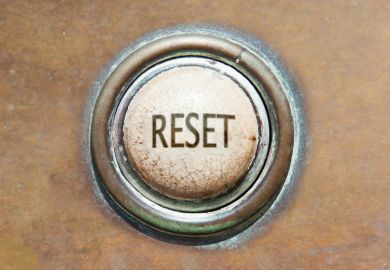With so much at stake in the coronavirus policy debate, and many research papers quickly lost in the flood of pandemic-related literature, getting your position noticed has never been more important for scientists. Some academics have tried to cut through the noise with open letters, which have been used to demonstrate the weight of scholarly opinion behind a particular viewpoint on Covid-19.
For example, more than 6,900 scientists, researchers and healthcare professionals have so far signed the “John Snow memorandum” (JSM), originally published in The Lancet on 14 October, which calls for “controlling community spread of Covid-19…until safe and effective vaccines and therapeutics arrive within the coming months”.
Meanwhile, more than 12,000 medical and public health scientists and 36,000 medical practitioners have signed the “Great Barrington Declaration” (GBD), which argues that “focused protection” for vulnerable groups would allow others “to resume life as normal”. Maintaining lockdowns until a vaccine arrives will, it argues, “cause irreparable damage, with the underprivileged disproportionately harmed”.
The main point of divergence for the two communities is on herd immunity; the GBD argues those at “minimal risk of death [should] live their lives normally to build up immunity to the virus” and create population-level immunity, while the JSM brands this notion a “dangerous fallacy unsupported by scientific evidence”.
While many have welcomed the opportunity to make their voices heard, the rise of these open letters and scientific petitions has faced criticism. In a letter to the BMJ, Stanford University medicine professor John Ioannidis says recent scientific petitions had created a “false sense of certainty during a new pandemic where uncertainty unavoidably exists”.
Signatories may lack expertise in key dimensions of the issue in question, and “absolute knowledge that can be summarised with a few paragraphs…is almost non-existent across science”, he writes.
Petitions can also create “covert coercion” if junior academics fail to sign position papers supported by more senior colleagues, while such documents can “easily fall prey to political ideology”, often being used as “weapons of scientific argumentation”, Professor Ioannidis says.
“Scientific truth is not a matter of zealotry and is not decided by the bulk of signatories,” he concludes.
However, academics involved in the two declarations argue that they have played an important role during the pandemic. Deepti Gurdasani, senior lecturer in machine learning at Queen Mary University of London and corresponding author for the JSM, said it was “important to relay the scientific consensus, where it exists, as we did with the JSM”.
More than 25 public health bodies and the World Health Organization agree with the JSM’s message that “naturally acquired herd immunity is an unethical and dangerous strategy that is not grounded in evidence”, she added.
“Contrary to a lot of reports in the media about their being divisions among scientists, the fact is that almost all scientists unanimously agree on a consensus, while a fringe faction in the community…most with not much expertise in epidemiology and public health, deny the threat posed by Covid-19 and propagate what can only be described as pseudoscience,” said Dr Gurdasani, comparing the situation to the consensus around human-driven climate change.
In the case of both climate change and Covid, “scientific letters should not be judged on the number of signatories, but rather on the quality of evidence presented on which the views are based”, argued Dr Gurdasani.
On climate change, she said, “the media has over the past few decades manufactured the idea of a ‘debate’ between two sides when 97 per cent of the scientific community [is on one side] while 3 per cent [is on the other], with the evidence overwhelmingly supporting one side”.
Sunetra Gupta, professor of theoretical epidemiology at the University of Oxford and co-creator of the GBD, said the declaration had served a different purpose from most scientific open letters. “It was not just about expressing the opinion held by a group of people – it has opened the door for a lot of scientists who previously felt unable to bring their views to the table because their opinions were dismissed as heretical,” she said.
Publishing an open letter was necessary given journals’ reluctance to publish papers on herd immunity, she added. “When your views are repeatedly dismissed as fringe or pseudoscience, it makes it difficult to get heard, so what other route did we have?” said Professor Gupta.
The declaration was “a structured response [to our position] rather than simply a barrage of diffuse insults”, she said, adding that the “open letter format has its limitations but it has been an important way to open up debate”.
后记
Print headline: Let’s have it out in the open





